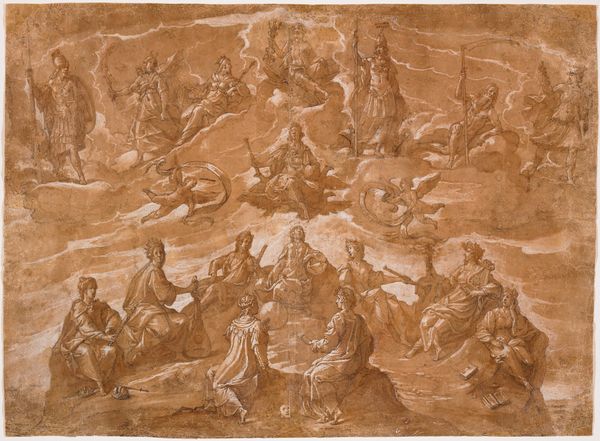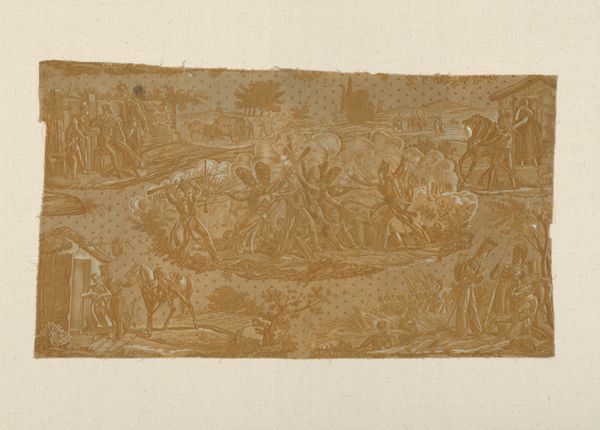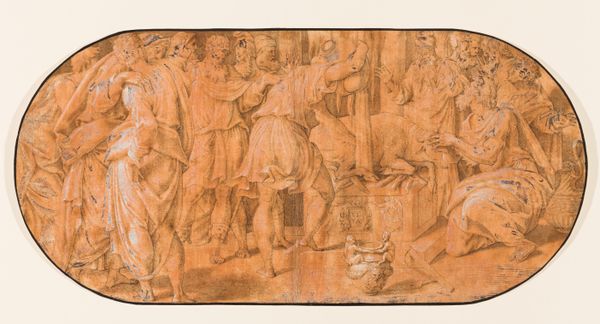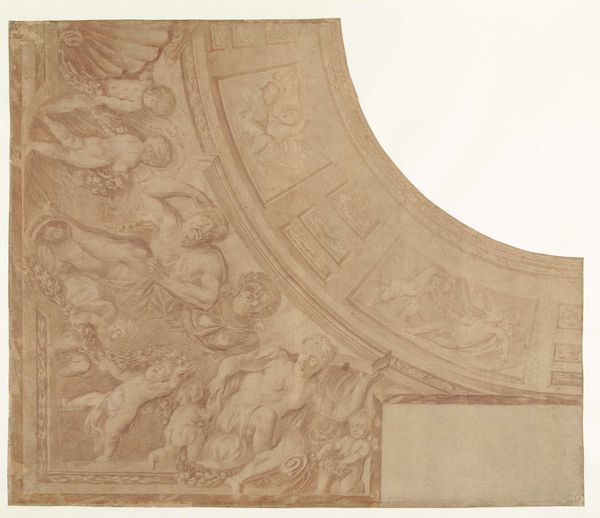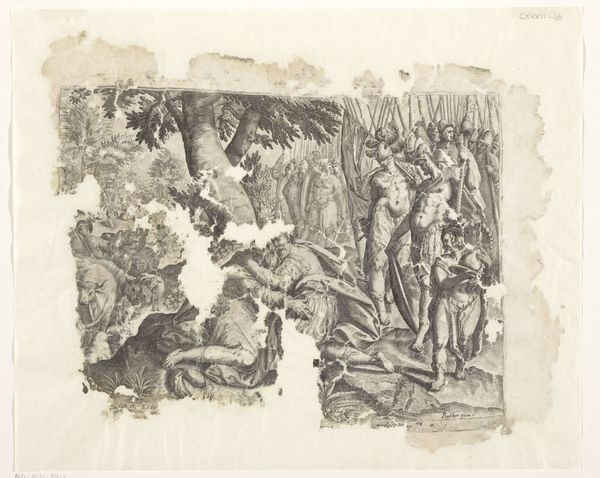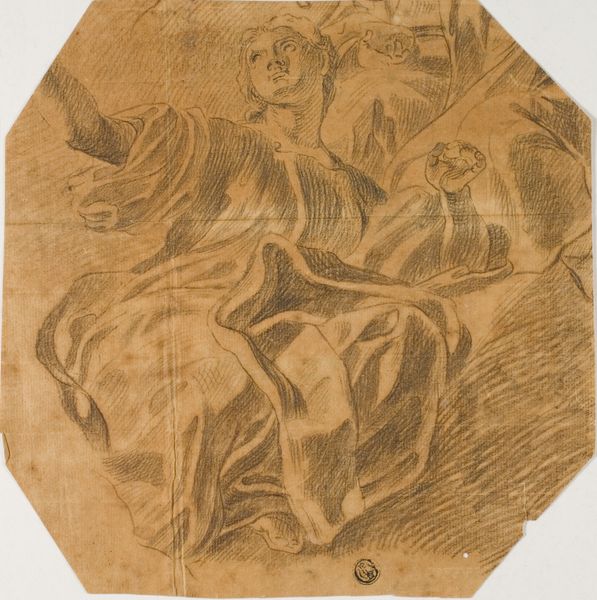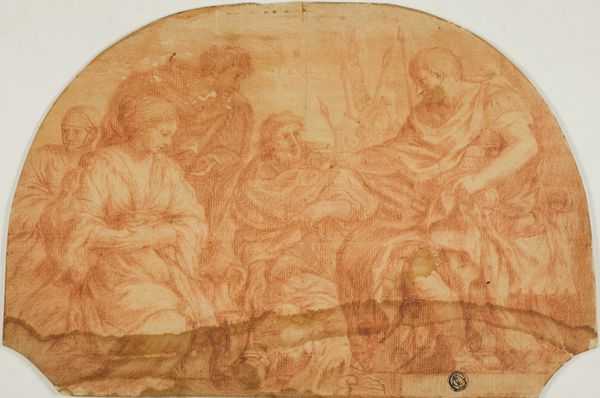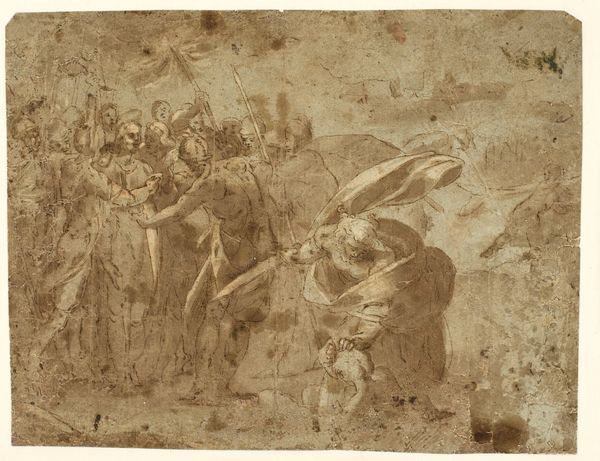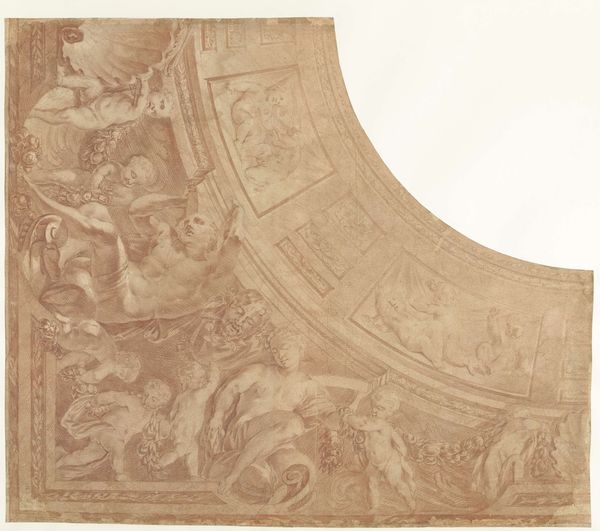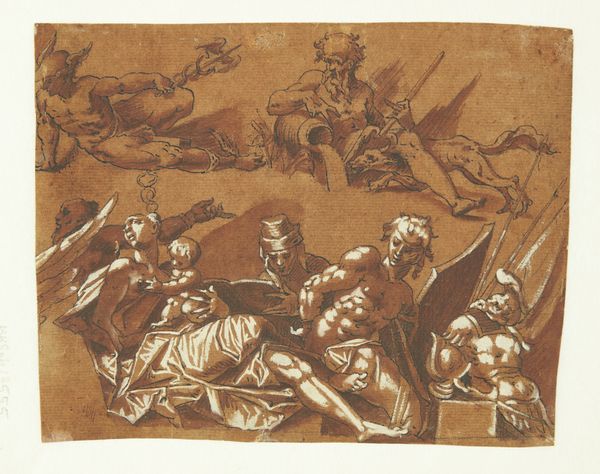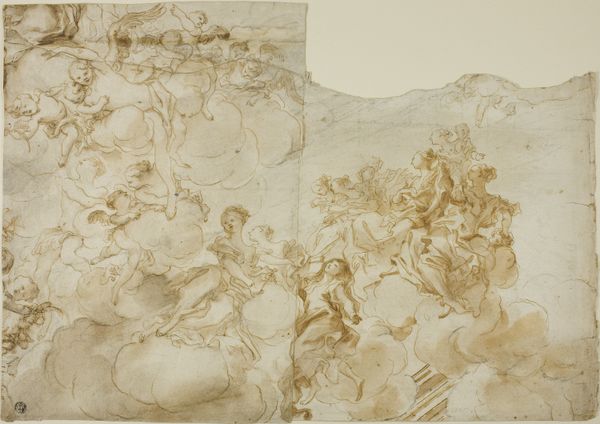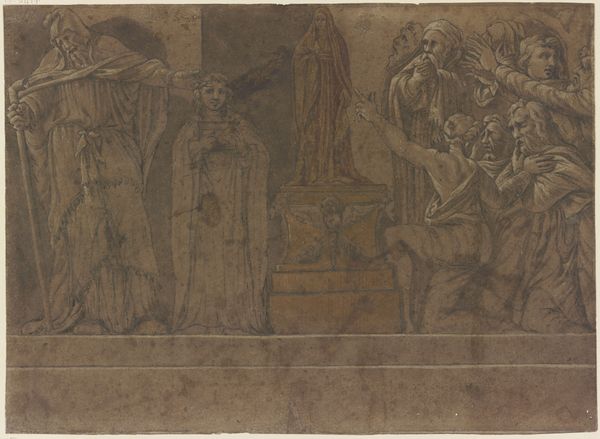
Sketches after Various Paintings, including the Visitation n.d.
0:00
0:00
drawing, print, gouache, paper, ink, chalk, charcoal
#
drawing
#
ink painting
# print
#
gouache
#
charcoal drawing
#
figuration
#
paper
#
11_renaissance
#
ink
#
chalk
#
charcoal
#
history-painting
Dimensions: 215 × 312 mm
Copyright: Public Domain
Editor: So, this drawing, "Sketches after Various Paintings, including the Visitation," is by a Follower of Francesco Monti, and it's undated, but resides at the Art Institute of Chicago. It combines ink, chalk, charcoal, gouache, and maybe even print on paper. There's almost a collage-like feel to it because of how different sketches are arranged. What strikes you most about it? Curator: I'm immediately drawn to the raw materiality. The paper itself, the evident use of multiple mediums like ink, chalk, and charcoal, they point to a studio environment, to a process. What was the source of the paper? What was the accessibility of the pigments, the charcoal? These things tell us about the artist’s circumstances. Was this preparatory work, a means to an end? How does that distinction—high art versus craft—influence its value? Editor: I see what you mean. I hadn't thought about the actual materials themselves. So, the different mediums weren’t just choices for effect, but products available in that time? Does that influence our interpretation? Curator: Absolutely. The selection of materials speaks volumes. Cheap paper suggests practice or study; higher-quality paper indicates a more deliberate, perhaps commissioned, piece. And look at the use of print combined with drawing. Is the print repurposed? A mass-produced element now bearing individualized marks? This blurring of production methods challenges notions of artistic skill and originality. How do we value skill when reproductive technologies were at play? Editor: That’s fascinating. So instead of focusing solely on the "Visitation" and its religious context, you're more interested in the social context and materials that allowed this composite sketch to exist. Curator: Precisely. Consider the labor involved: who prepared the paper? Who supplied the materials? What was the artist paid, in kind or currency? The physical existence of this work implicates a network of makers, not just a single “artist.” This forces us to question the romantic idea of solitary genius. Editor: I never really considered all of that! Thanks, I am going to look at other drawings very differently now. Curator: It gives new texture to our view of art production, doesn’t it?
Comments
No comments
Be the first to comment and join the conversation on the ultimate creative platform.
